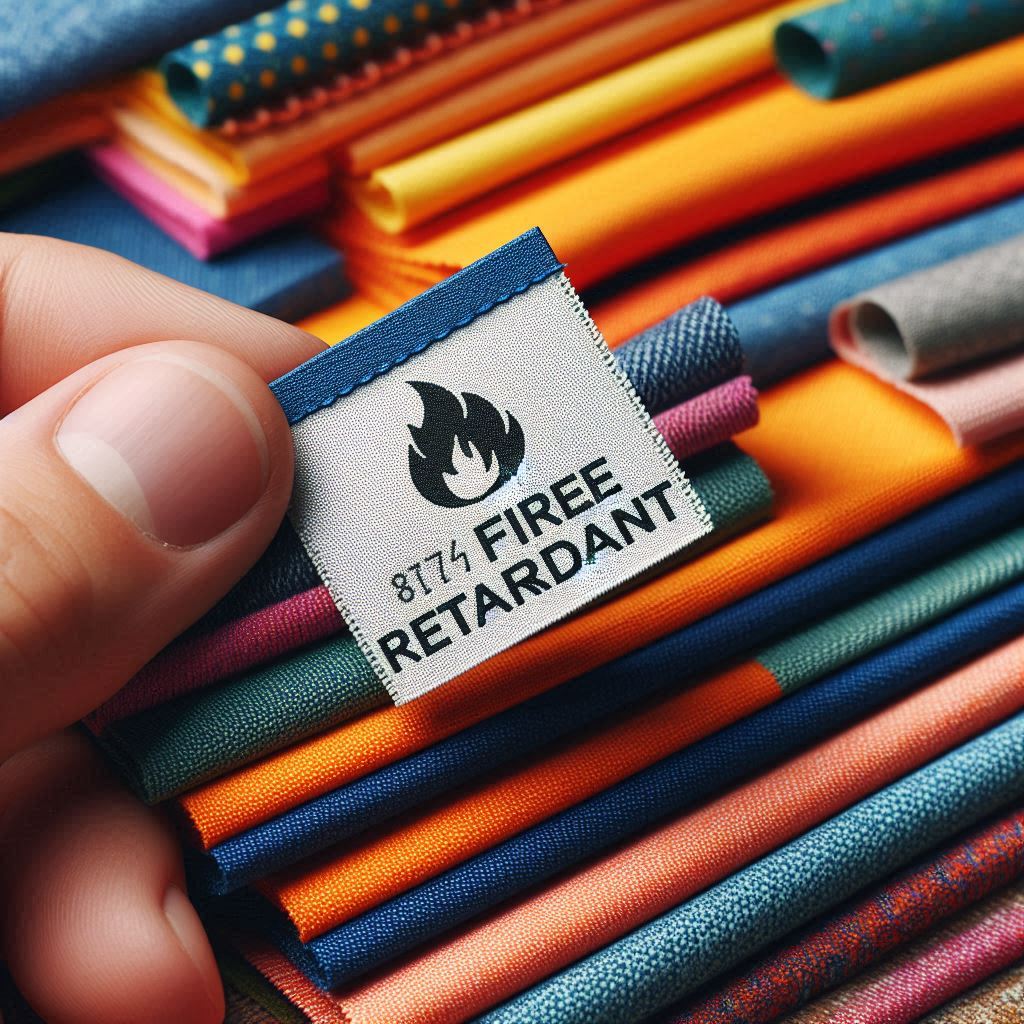
As a seasoned blogger, I’ve delved into the burning question: Is polyester truly fire retardant? In this article, I aim to unravel the mystery surrounding polyester’s flame-resistant properties. Many of us have polyester garments or household items, but do we know how they fare in the face of fire? Let’s explore the science behind polyester and its ability to withstand flames.
Key Takeaways
- Polyester is inherently flame-resistant due to its unique chemical structure and ability to melt and shrink away from heat sources.
- The low moisture regain of polyester prevents easy ignition and contributes to its flame-resistant properties.
- Polyester’s flame-retardant qualities make it a versatile and valuable material in various industries, emphasizing its importance in fire safety.
- Factors like chemical treatments, polyester blends, fabric structure, thickness, weight, and maintenance influence polyester’s fire resistance.
- Adhering to standardized testing procedures such as ASTM D6413, NFPA 701, and ISO 15025 is crucial for evaluating polyester’s fire retardant accurately.
Understanding Polyester
Polyester is a synthetic fiber known for its durability and wrinkle resistance. It’s commonly used in clothing, bedding, and upholstery due to its affordability and easy care. Polyester fibers are inherently flame-resistant, making them a popular choice for flame-resistant textiles.
When exposed to flames, polyester fibers melt and shrink away from the heat source, which helps prevent the spread of fire. This unique property is what contributes to polyester’s reputation as being fire retardant. Polyester fabrics can self-extinguish once the flame source is removed.
The chemical structure of polyester plays a significant role in its fire-resistant properties. Polyesters are made from long-chain polymers that are difficult to ignite, adding to their flame-retardant characteristics. Additionally, polyester fibers have a low moisture regain, meaning they don’t absorb moisture easily, which can further enhance their flame resistance.
Overall, polyester’s ability to resist flames and inhibit the spread of fire makes it a versatile and valuable material in various industries, from fashion to home furnishings.
Flame Retardant Properties of Polyester
When it comes to flame retardancy, polyester stands out for its impressive qualities. The molecular structure of polyester, characterized by long-chain polymers, plays a significant role in its ability to resist ignition and inhibit fire spread.
One key factor contributing to the flame-retardant properties of polyester is its inherent resistance to melting. When exposed to flames, polyester fibers tend to melt and shrink away, effectively acting as a barrier that prevents the fire from spreading further. This behavior is crucial in situations where fire containment is critical.
Another essential aspect is the low moisture regain of polyester. This characteristic means that polyester fabrics do not absorb moisture easily, making them less susceptible to igniting in the presence of heat or flames. The combination of low moisture absorption and the tendency to melt rather than burn enhances the flame resistance of polyester materials.
In various industries where fire safety is paramount, such as the automotive and home furnishing sectors, polyester with its flame-retardant properties serves as a reliable choice. The ability of polyester to withstand high temperatures, resist flames, and impede fire propagation makes it a valuable material for applications where fire protection is a top priority.
Factors Affecting Polyester’s Fire Resistance
When it comes to polyester’s fire resistance, several factors play a significant role in enhancing its ability to withstand flames. Here are some key aspects that influence polyester’s fire retardant properties:
- Chemical Treatments: The application of flame retardant chemicals during the manufacturing process can significantly improve polyester’s fire resistance. These chemicals work by either creating a protective layer that inhibits combustion or by suppressing the formation of flammable gases.
- Polyester Blend: Mixing polyester fibers with other materials such as cotton or modacrylic can enhance its fire retardant properties. Blending polyester with other fibers can alter its flame resistance and make it more suitable for specific applications where fire safety is crucial.
- Fabric Structure: The weave and construction of polyester fabrics can impact their fire resistance. Tighter weaves and denser fabric structures generally offer better protection against flames as they provide a barrier that slows down the spread of fire.
- Thickness and Weight: Thicker and heavier polyester fabrics tend to be more fire retardant than lighter variants. The additional material can act as a buffer against flames and heat, providing a higher level of fire protection.
- Maintenance: Proper care and maintenance of polyester garments or products can also affect their fire resistance. Regular cleaning and avoiding exposure to harsh chemicals can help preserve the flame retardant properties of polyester materials.
Understanding these factors that influence polyester’s fire resistance is crucial for ensuring the safety and reliability of polyester products in various industries where fire protection is essential.

Testing Standards for Fire Retardancy
When evaluating the fire retardancy of polyester, it’s crucial to adhere to standardized testing procedures. Testing standards ensure consistency and reliability in assessing the material’s resistance to flames. Some key testing standards for determining the fire retardant properties of polyester include:
- ASTM D6413: This test measures the vertical flame resistance of textiles.
- NFPA 701: Focuses on the flammability of fabrics used in draperies and other window treatments.
- ISO 15025: Evaluates the fire resistance of protective clothing materials.
Understanding and complying with these testing standards is essential in the development and production of polyester products with optimal fire retardant capabilities. When polyester meets the requirements set by these standards, it provides a higher level of safety in environments where fire hazards are prevalent.
Conclusion
Polyester’s fire retardancy is a critical aspect that shouldn’t be overlooked. By following standardized testing procedures like ASTM D6413, NFPA 701, and ISO 15025, we can ensure the safety and reliability of polyester products in various applications. Adhering to these testing standards is essential for developing fire-resistant textiles, draperies, and protective clothing. Upholding these guidelines guarantees that polyester materials meet the necessary requirements for fire safety, providing peace of mind in environments where fire hazards are a concern. It’s vital to prioritize fire retardancy in polyester production to enhance overall safety and minimize risks associated with potential fire incidents.
Frequently Asked Questions
What are the key testing standards for evaluating the fire retardancy of polyester?
The key testing standards for evaluating the fire retardancy of polyester include ASTM D6413, NFPA 701, and ISO 15025. These standards assess the material’s resistance to flames in applications like textiles, draperies, and protective clothing.
Why is it important to adhere to standardized testing procedures for fire retardancy evaluation?
Adhering to standardized testing procedures is crucial for ensuring polyester products have optimal fire retardant capabilities. Compliance with testing standards like ASTM D6413, NFPA 701, and ISO 15025 enhances safety in environments prone to fire hazards.
How do standardized testing procedures enhance safety in fire-prone environments?
By evaluating polyester products using standards like ASTM D6413, NFPA 701, and ISO 15025, safety in fire-prone environments is enhanced as products with optimal fire retardant capabilities are developed and produced.
What role do testing standards play in the development of fire retardant polyester products?
Testing standards such as ASTM D6413, NFPA 701, and ISO 15025 play a vital role in the development of fire retardant polyester products by assessing their resistance to flames in various applications and ensuring they meet safety requirements.
